In Pictures: Liberian hip-co
Two local artists are pioneering Liberia’s version of hip-hop.
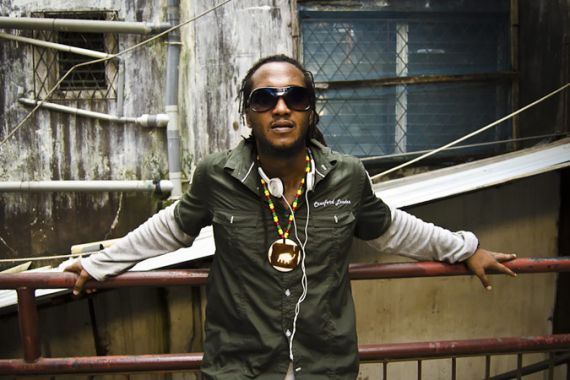
In a small room painted bright blue in central Monrovia, a scratched CD of background beats is blasted over an old stereo. Against one wall is a small shelf lined with impeccably clean, multi-coloured sneakers. There is a mattress on the floor and crammed into the rest of the smoke filled space are two men, free-styling about women, corruption and war. Welcome to the heart of Liberia’s hip-co scene.
Hip-co is Liberia’s version of hip-hop, the “co” is short for colloquial or Liberian English. In a country slowly putting itself back together after over a decade of civil war that ended in 2003, music has been crucial to expressing collective pain and hopes for the future. In the run up to this October’s presidential election, the hip-co artists have been singing about unemployment, education and government dismissal of the issues facing everyday people.
Keep reading
list of 4 itemsThousands protest against Israel’s participation in Eurovision final
Israel qualifies for Eurovision final amid Gaza war protests
Slum to stardom: Indonesian film director Joko Anwar is riding high
The two men in the room, spitting out rhymes at breakneck speed, are Takun-J and Rabbie Nassrallah, or Nasseman, as he goes by on stage. Takun-J, with his silver medallion and cornrows, looks like an imposing cross between Samuel L Jackson and Snoop Dogg. Rabbie is a wild, dreadlock-flinger, who filmed his latest music video in the bombed-out shell of a bank in the heart of Monrovia. Around 100 people now live in the building, carefully washing their clothes and feeding their babies among piles of rubble and mosquito infested puddles. These are the people the hip-co scene is not only trying to represent through music, but also to entertain.
From venting their frustration about government abuse or crooning shyly about their girlfriends, hip-co is fiercely Liberian and its artists are determined to show that more things can emerge from their country than civil war.
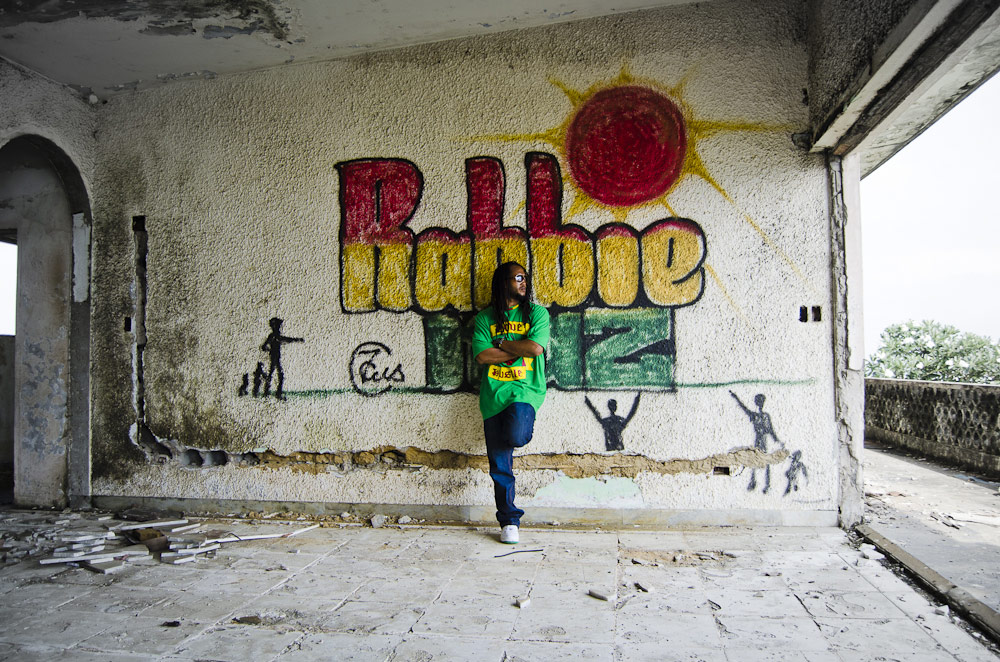 |
| 1) Rabbie Nassrallah, known professionally as Nasseman, is Liberia’s foremost reggae artist. With a little artistry, an abandoned mansion destroyed during the civil war became the set for one of Rabbie’s latest music videos [Cameron Zohoori] |
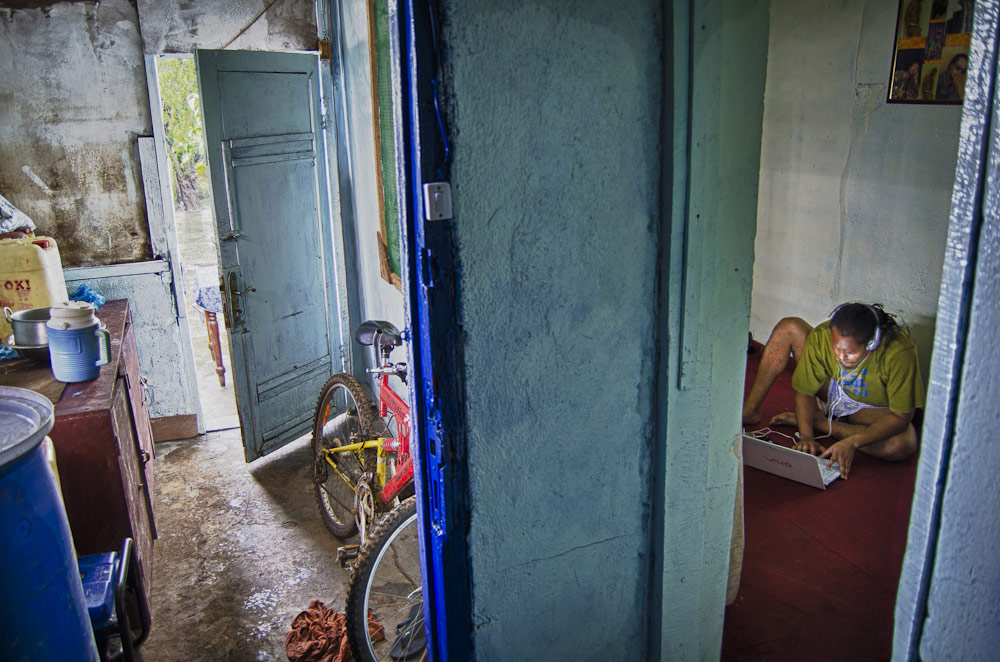 |
| 2) Rabbie’s home, two rooms rented on the side of a pastor’s house in central Monrovia [Cameron Zohoori] |
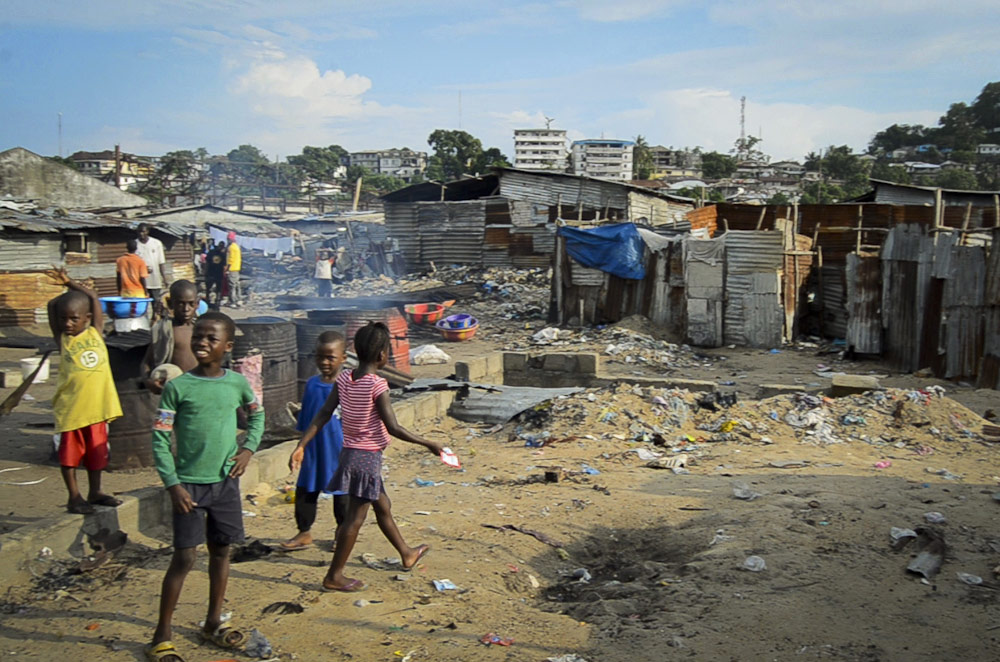 |
| 3) West Point, an informal settlement in Monrovia and home to 80,000 Liberians. Takun-J says: ‘If you come from West Point, people might not take you to be a good person, criminals come from there, rogues, thieves. But a lot of good people live there, a lot of families. They feel like they are outcasts, like nobody pays attention to them’ [Cameron Zohoori] |
 |
| 4) Jonathan Koffa, AKA Takun-J, is Rabbie’s best friend and one of the most popular hip-co artists in Liberia. A uniquely Liberian genre, hipco combines hip-hop sensibilities with the the Liberian English dialect known as Colloqua. Takun-J: ‘This is the way we all relate to one another easily, through the hip-co. It’s the way we talk everyday, put into song; it has great potential. I want to make sure this hip-co thing takes the world’ [Ansu Kromah] |
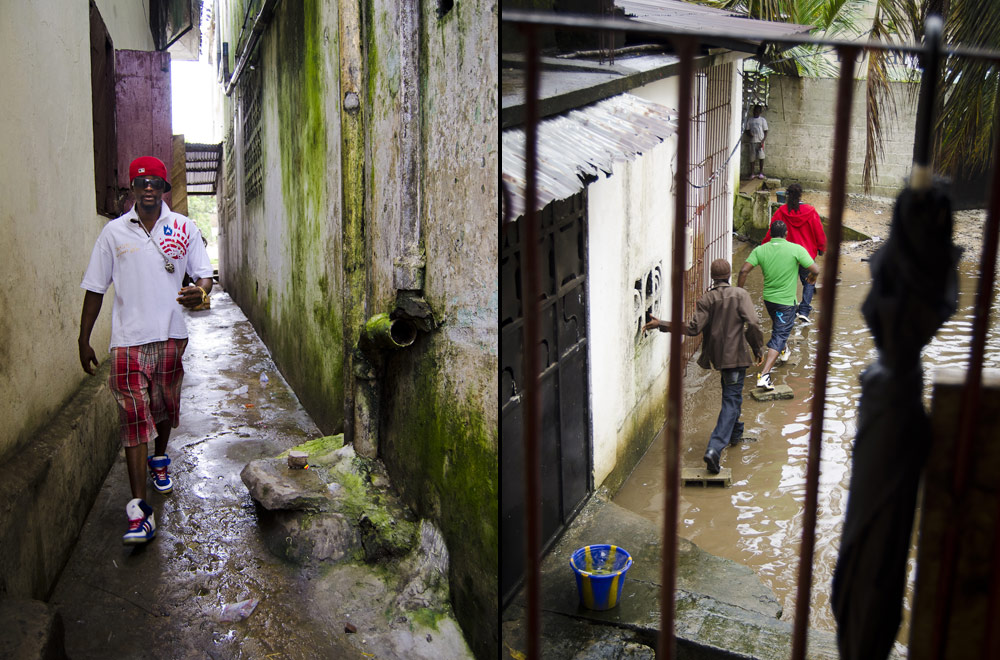 |
| 5) Takun-J: ‘A lot of people say: “Takun-J, you be wasting your time behind the hip-co.” I believe in faith, it’s faith that got you and I living right now. The hope that it will take you somewhere tomorrow. I always keep the courage and the vision, I let nothing discourage me in my music.’ Rabbie and Takun-J make their way across the parking lot of a local radio and recording studio. Like all Liberians, they must contend with poor local infrastructure, particularly during the May-October rainy season [Cameron Zohoori] |
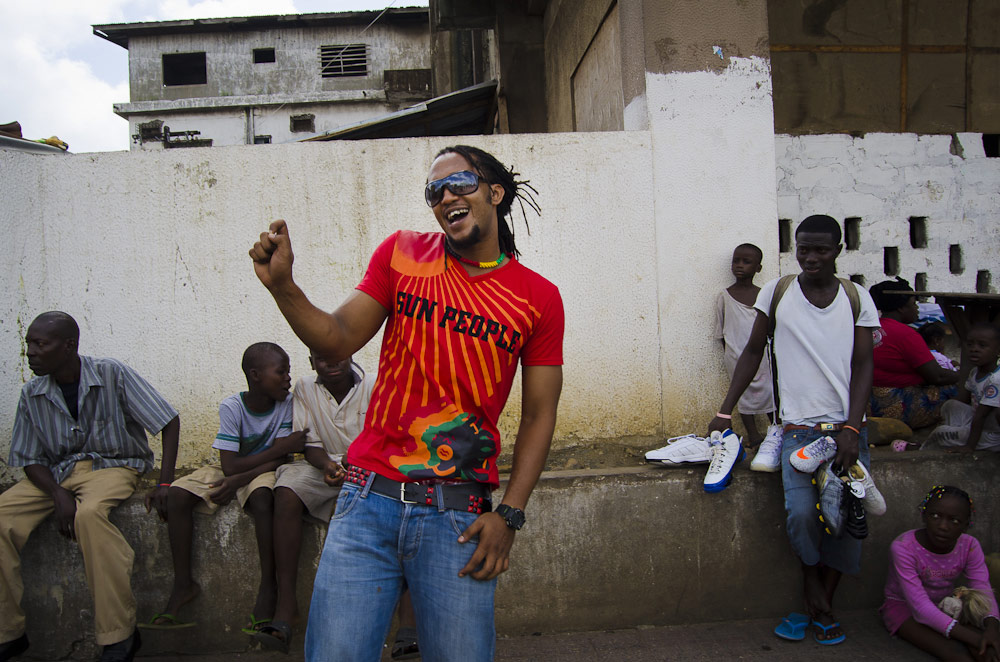 |
| 6) As a child, Rabbie lived in the centre of Liberia’s capital Monrovia throughout the 1989-2003 civil war, witnessing the killing and destruction caused by rival warlords such as former president Charles Taylor. He brings those experiences to bear on his socially charged lyrics [Cameron Zohoori] |
 |
| 7) Buzzy Quarter slum in central Monrovia is home to many of Rabbie and Takun-J’s friends, and was the setting of one of their recent music videos [Cameron Zohoori] |
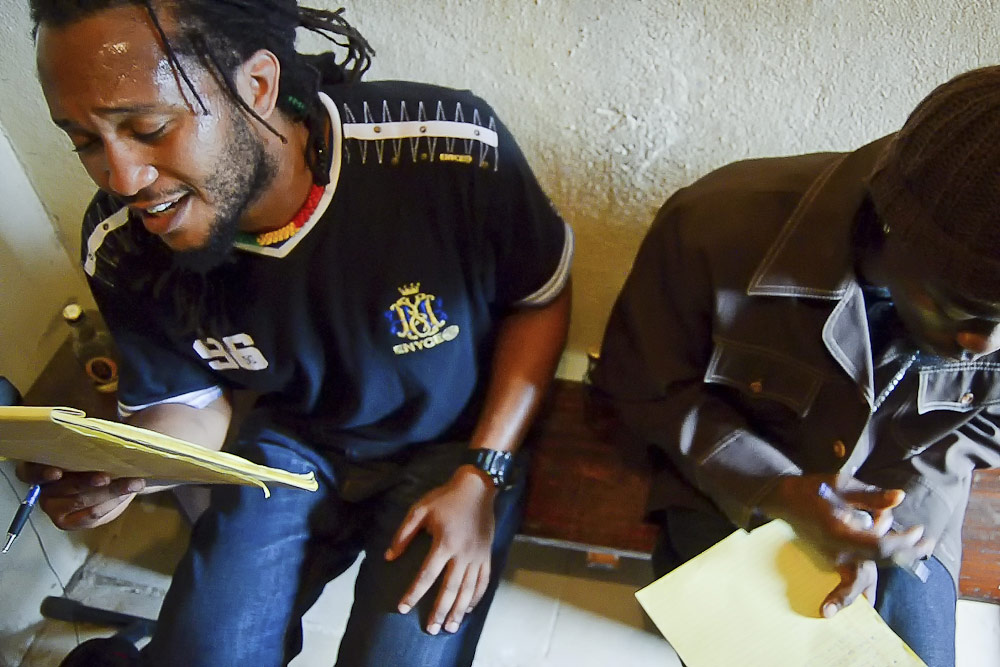 |
| 8) Rabbie and Takun-J have an intensive two-hour freestyling, writing, and recording session to make a collaborative track for an upcoming album. Rabbie: ‘We coming musically in two dimensions, the reggae and the hipco, the Liberian thing. It’s a double sword, sharp from both edges’ [Cameron Zohoori] |
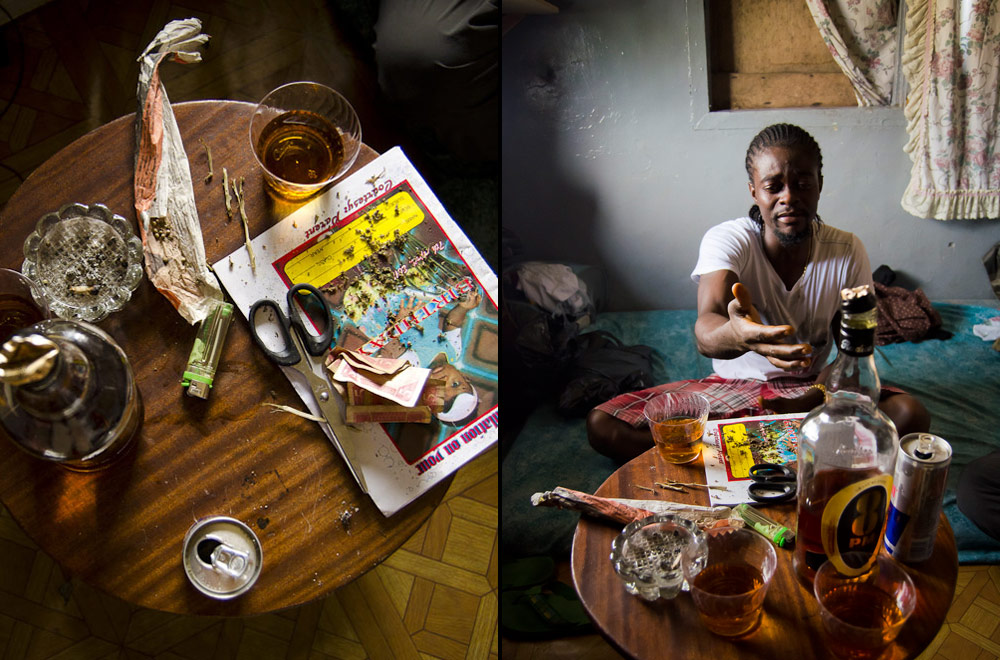 |
| 9) Takun-J relaxes at his home, a room above a bar in downtown Monrovia. ‘I don’t know what I do with money,’ he says. ‘I just give it away as it comes. I don’t prioritise it. I prefer giving it to the ones that need it. I prefer taking the pains, going through the strife.’ [Cameron Zohoori] |
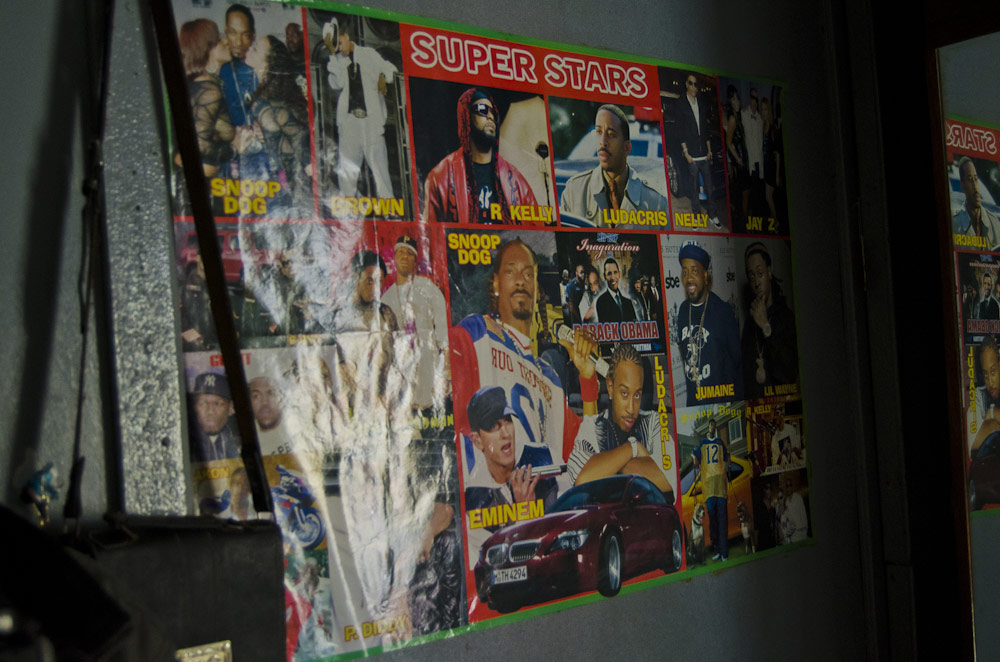 |
| 10) A poster of US hip-hop artists in Takun-J’s home. Takun-J: ‘My inspiration don’t come from one person. I got Bob Marley, I got Tupac, I got Lucky Dube. I visit everywhere, I get concepts from everywhere. Hip-hop, hip-co, R&B, reggae, ragga, I get a taste of everything. If I could do a feature track with anybody in the world right now, it would be Akon. That’s my boy, he inspires me a lot’ [Cameron Zohoori] |
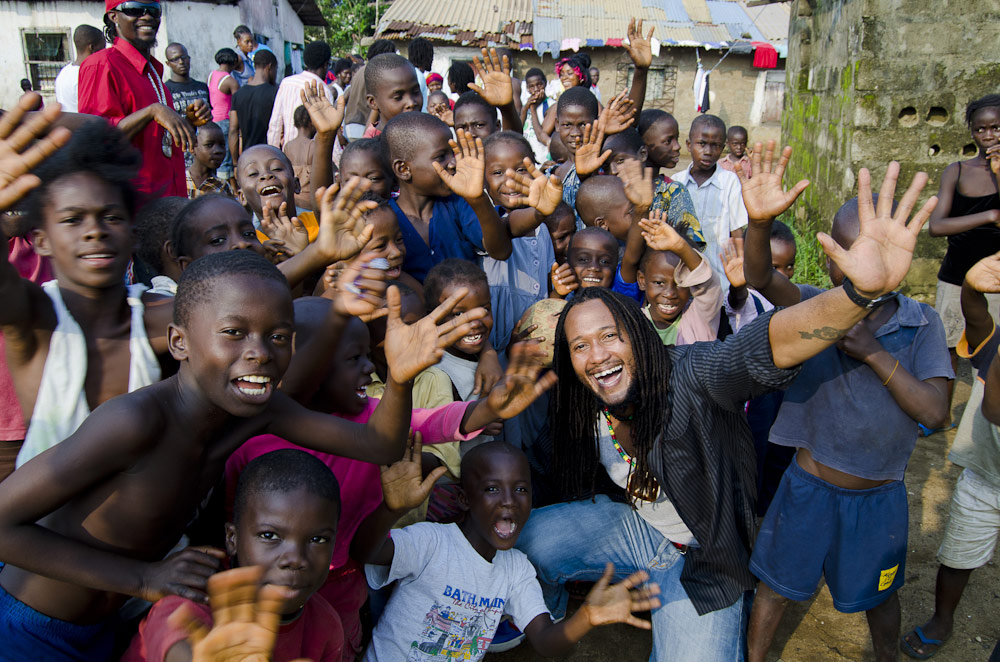 |
| 11) Rabbie: ‘They’re depending on us, because we relate the message, the information, directly in the heart, minds, and souls of the Liberians out there. They feel us, every hood, every ghetto, every little kid that is within the ghetto, the slum, the higher places, they feel us’ [Cameron Zohoori] |
For more information visit the Together Liberia project.